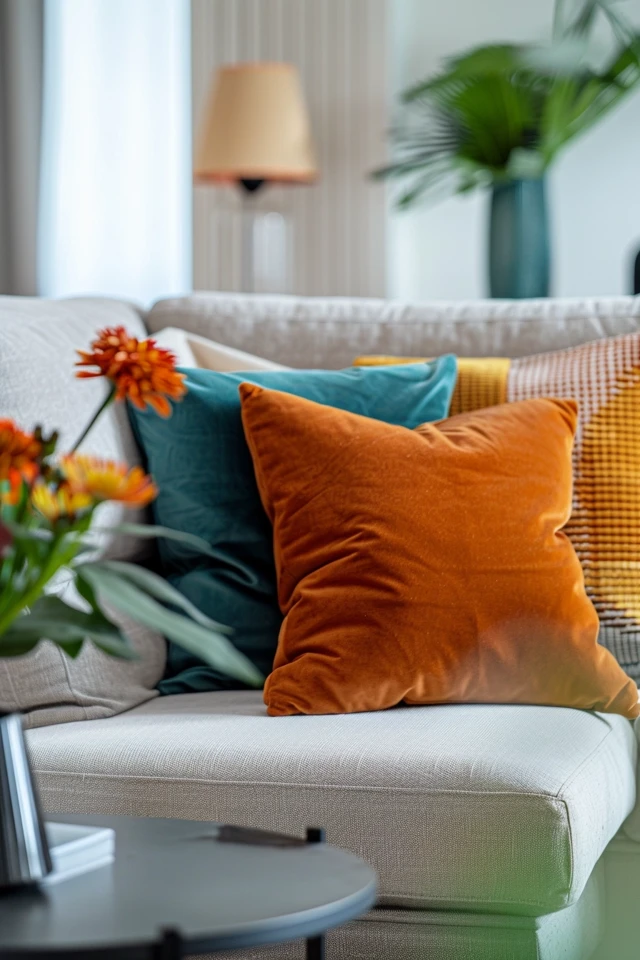When it comes to creating a stylish and harmonious living room, coordinating your furniture and decor is key. Mixing different furniture styles can add personality and create a visually interesting space that reflects your unique taste. But how do you ensure that everything comes together seamlessly? I’ve got you covered with these expert tips for coordinating your living room furniture and decor.
Key Takeaways:
- Choose a style or theme that you love and want to incorporate into your living room.
- Coordinate colors and patterns to create a cohesive and visually pleasing look.
- Balance the space by mixing furniture sizes, shapes, and heights.
- Mix textures to add depth and visual interest to your living room.
- Create focal points to draw attention and create a sense of balance in the room.
Tips for Mixing Furniture Styles in Different Rooms
When it comes to creating a cohesive and visually appealing space, mixing furniture styles can work wonders in various rooms of your home, not just the living room. Whether you want to blend vintage and modern pieces or combine rustic and industrial elements, here are some tips for coordinating furniture and decor in different spaces:

1. Choose a Focal Point
Select a standout piece of furniture or decor that will serve as the focal point of the room. This could be a bold statement sofa, an eye-catching artwork, or a unique accent chair. Build the rest of the room around this focal point to maintain a harmonious design.
2. Harmonize the Color Scheme
Matching color schemes for the living room and other rooms is crucial in achieving a coordinated look. Select a color palette that complements your furniture and decor choices. Consider using a mix of neutral shades with pops of color to add visual interest while keeping the overall look cohesive.
3. Coordinate Styles
While mixing furniture styles, it’s important to ensure that they still coordinate well with each other. Opt for pieces that share common design elements, such as similar finishes or materials. This will help tie the different styles together and create a cohesive look.
4. Play with Scale and Proportions
Varying the scale and proportions of your furniture can add visual interest and balance to the room. Mix larger pieces with smaller ones and experiment with different heights and sizes. This will create a dynamic and well-balanced space.
5. Use Texture to Add Depth
Introducing different textures through textiles, materials, and finishes can give your room depth and dimension. Combine smooth and rough textures, soft and hard surfaces, and shiny and matte finishes to create a visually engaging and harmonious environment.
6. Incorporate Layering and Accessories
Finalize your furniture arrangement ideas by layering accessories and decor items. Add throw pillows, rugs, curtains, and wall art to enhance the overall look. Pay attention to the scale, color, and style of these accessories to ensure they complement the furniture and decor in the room.
By following these tips for coordinating furniture and decor in different rooms, you can achieve a cohesive and visually stunning interior design. Remember to choose a focal point, harmonize the color scheme, coordinate styles, play with scale and proportions, incorporate texture, and layer accessories to create a harmonious and inviting space.
Conclusion
Mixing furniture styles is an exciting way to infuse personality into your home and create a visually captivating space. By following these tips, you can harmonize furniture and decor to achieve a cohesive and harmonious atmosphere that reflects your unique taste.
To start, choose a style or theme that resonates with you and serves as a foundation for your design. Whether it’s modern, traditional, eclectic, or a combination of different styles, having a clear direction will help you make informed choices when selecting furniture pieces.
Next, consider coordinating colors throughout the room. Color schemes play a vital role in tying together different furniture styles. Opt for complementary shades or use a neutral palette as a unifying backdrop that allows your furniture pieces to shine.
Creating balance is essential in a space with mixed furniture styles. Distribute different styles of furniture evenly throughout the room, ensuring visual weight is evenly distributed. This will prevent any one furniture style from overpowering the space.
Lastly, don’t be afraid to experiment with texture and create focal points. Mixing textures adds depth and visual interest to the room. Incorporate a variety of materials such as wood, metal, glass, and fabric to create a dynamic and captivating environment. Additionally, create focal points with statement furniture pieces or eye-catching decors to draw attention and anchor the overall design.
Whether it’s your living room, bedroom, dining room, or home office, the art of mixing furniture styles allows you to curate a home that tells your story. So go ahead and explore different combinations, embrace your creativity, and design a space that truly feels like you!


